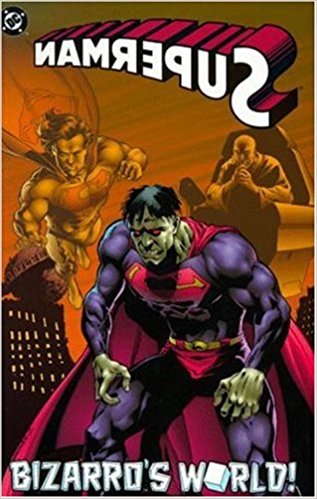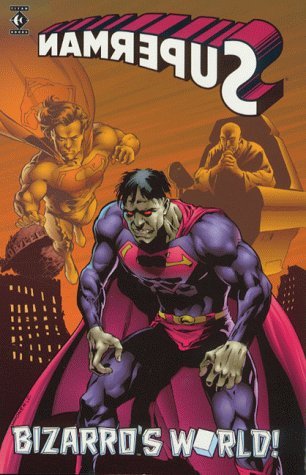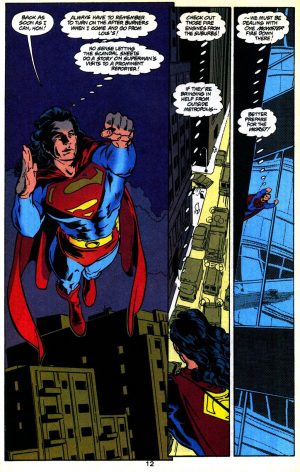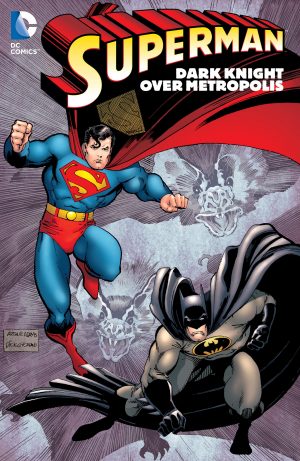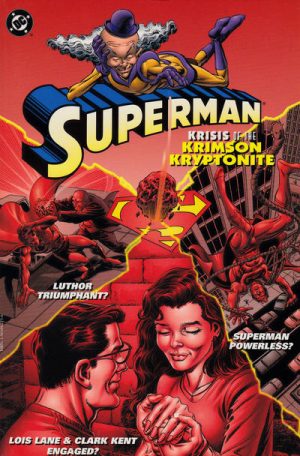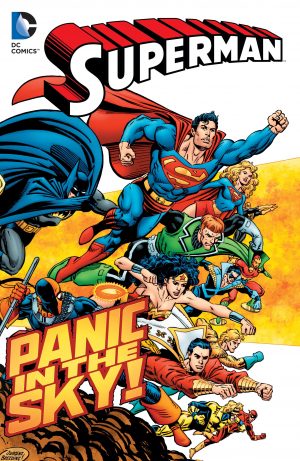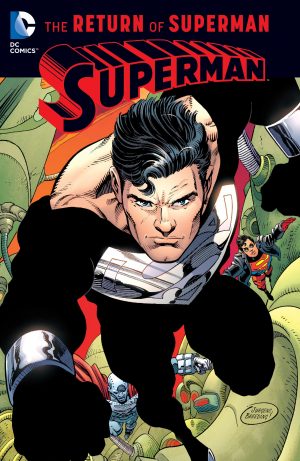Review by Frank Plowright
When John Byrne re-booted Superman in the mid-1980s he jettisoned pretty much all of the baggage that diminished Superman as a serious character, dealing early with Bizarro, the dim copy of Superman who did everything in reverse, never logical at the best of times. It took eight years before Bizarro returned.
As previously in the new continuity, Bizarro is a faulty clone of Superman, and has been created by an ailing Lex Luthor, the latest in a series of schemes to prolong his life. That, however, isn’t Superman’s concern as he responds to reports of his own rampaging behaviour. There’s an element of pathos about Bizarro, who has a limited understanding of the world beyond the feelings embedded in him at the time of his cloning, not least the great affection for Lois Lane and Lana Lang.
All early and mid-1990s Superman stories crossed over between four separate monthly comics, each by a different creative team, so there’s inconsistency to the art. Jackson Guice’s contribution is almost all fight scene, which might be seen as playing against his strengths, but it’s a dynamic looking chapter. Barry Kitson is well utilised by setting most of his contribution in a distorted world created by Bizarro, but Jon Bogdanove’s angular Superman and crowded pages may represent the style of the early 1990s better than the other artists, but it isn’t always pleasant. What works on his pages is the idea of having Bizarro resemble Frankenstein’s monster. The sample page displays the elegance of Stuart Immonen, who starts and finishes the story.
Bizarro’s World is a slim graphic novel at five chapters, but even so doesn’t have enough story to fill them, artificially extended by last minute escapes. The best chapters are those written by Dan Jurgens starting and completing events, each of his contributions containing enough plot to sustain matters. Perhaps one central chapter would have done the job, but Karl Kesel, Roger Stern and Louise Simonson’s job was to keep the plot in a holding pattern, and that’s to the cost of the story overall.
